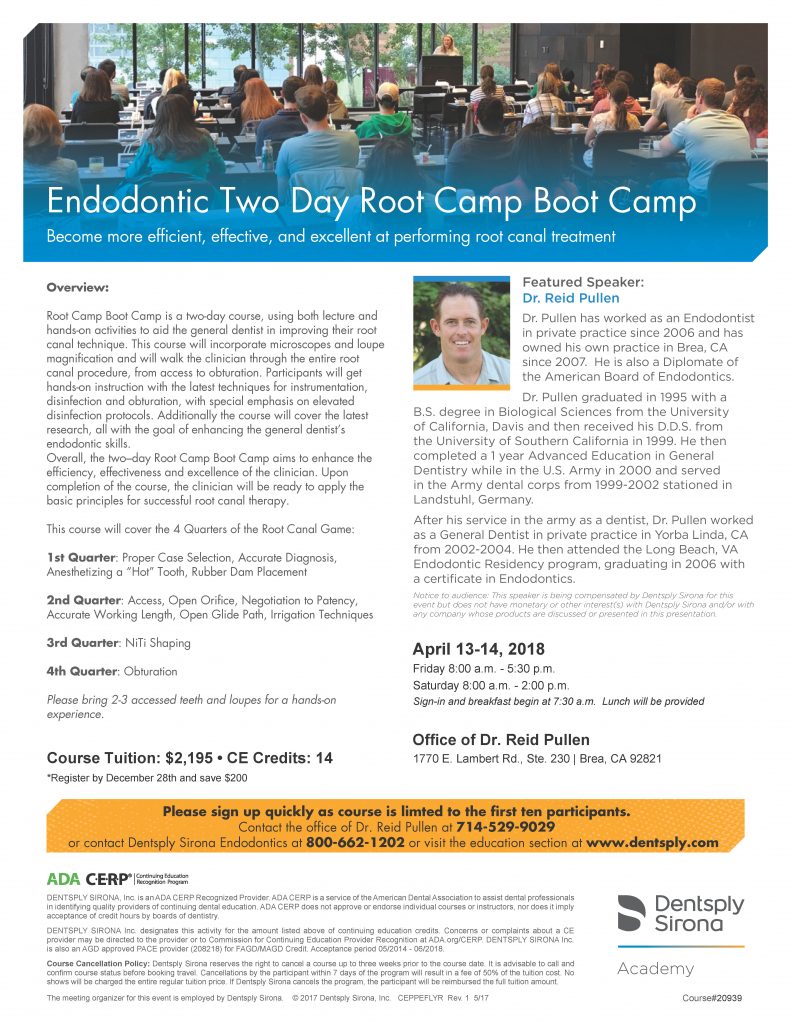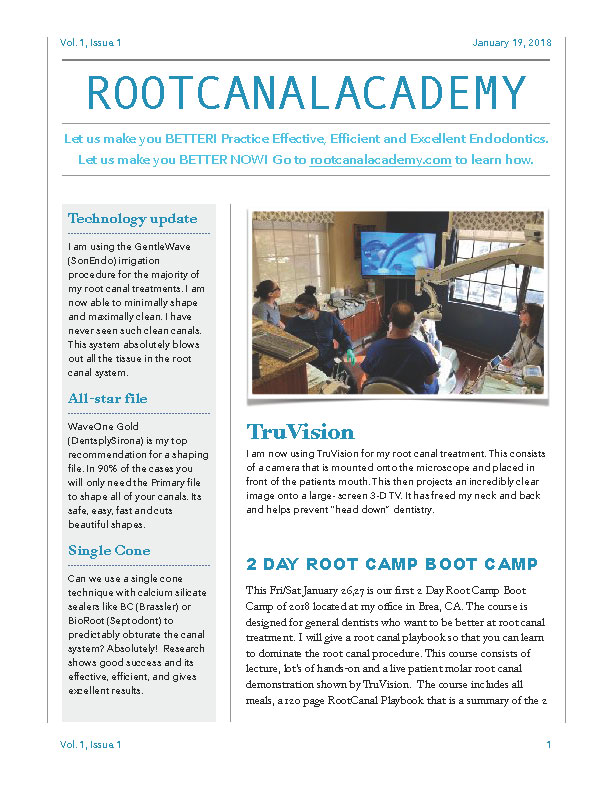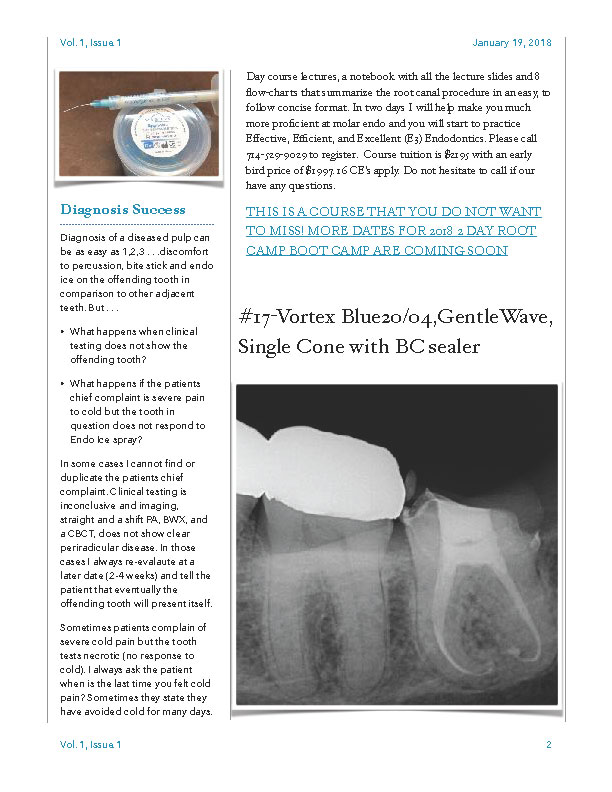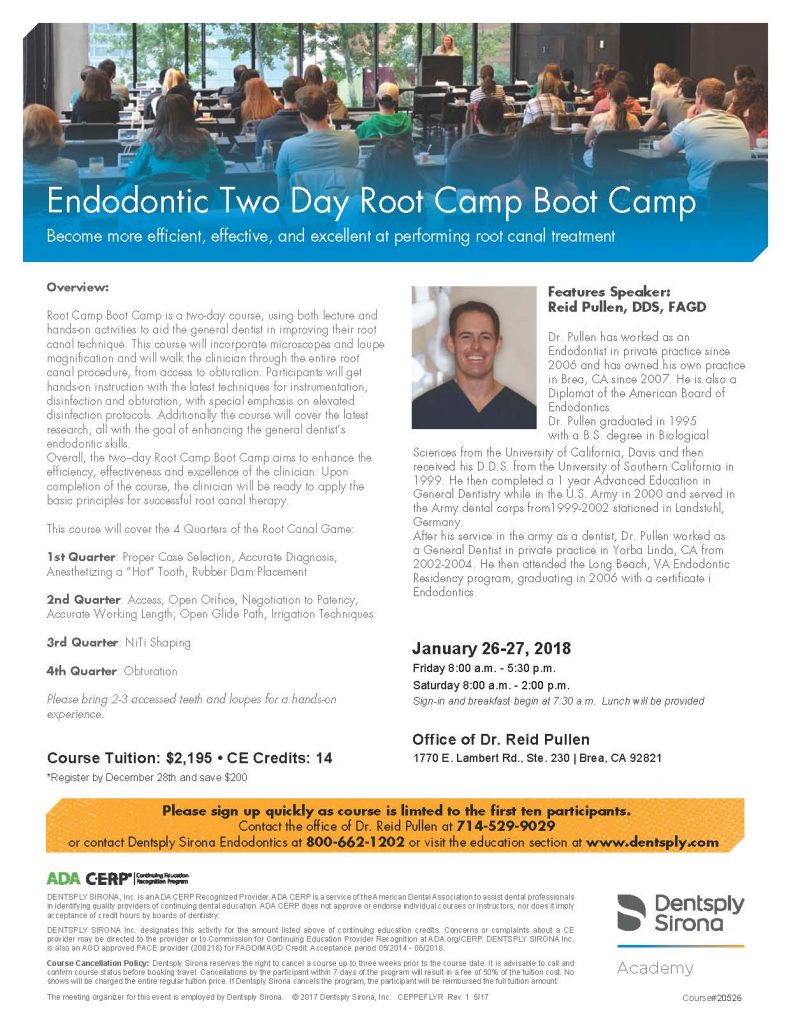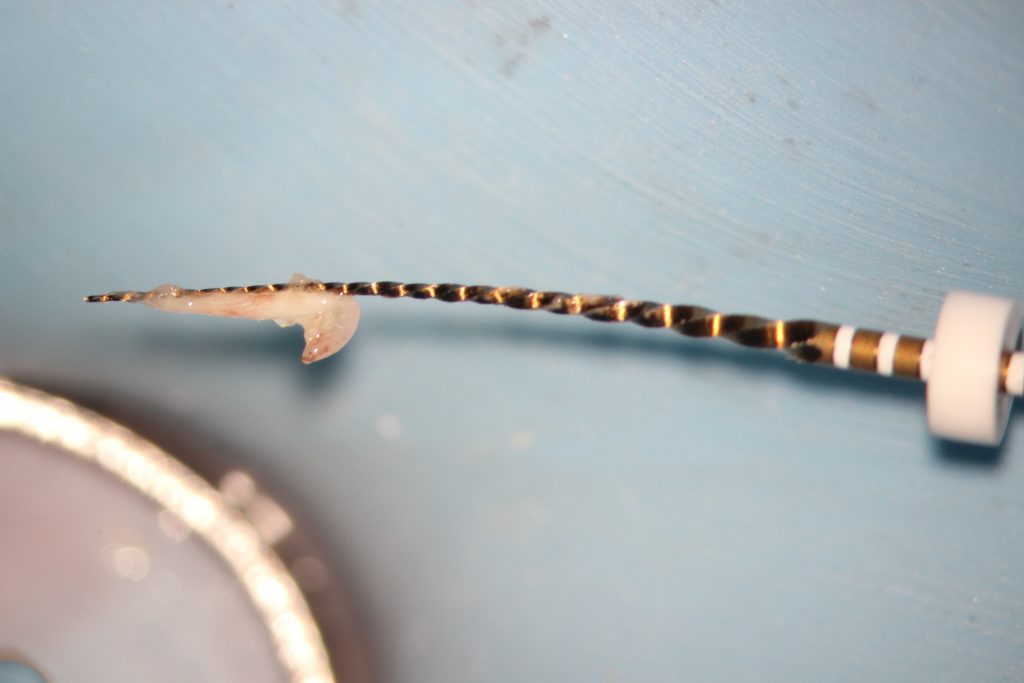Dear Clinician,
The 2 Day Root Camp Boot Camp will make you a better clinician and help you finally learn a root canal system or playbook. The 4 Quarters of the Root Canal Game playbook will give you a step-by-step method and will help you avoid feeling lost inside a tooth during your next root canal. Come and learn with me and be ready to dominate your next root canal.
Reid
